 Image: IDG
Image: IDGA proper education
If you grew up in America during the 1970s, 80s, or 90s, it’s likely that you played at least one educational computer game—either at school, at home, or even on your mom or dad’s computer at work. These games sought to entertain as well as educate with the clichéd goal of “making learning fun.” And, honestly, some were fun enough to play voluntarily.
Under consultation with PCWorld and Macworld, I’ve peeled back the pages of time to examine some of the best educational games of the classic PC era. For clarity’s sake, we’re limiting this article to personal computer-based titles, so you won’t find any console games on the list. When you’re done reading, please tell us your favorite educational titles in the comments below. Ready to go back to school? Then let’s get started.
Lemonade Stand (1979)
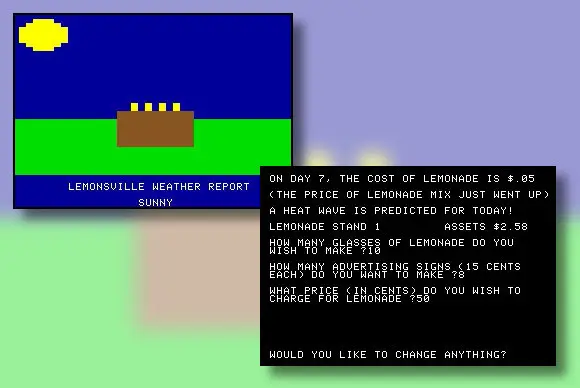
publisher: Apple Computer; platforms: Apple II
Lemonade Stand is a predictably lemon-themed business simulator first created in 1973 by famous educational publisher MECC. Its most popular edition shipped as a sample program with Apple II computers in the late 1970s and early 1980s. In the game you play as a grade school tycoon who sets up a cutthroat curbside lemonade shop made out of cardboard (ok, maybe I’m reading too much into this), and you have to decide how to control inventory, set your prices, and advertise based on weather conditions. The gameplay is entirely text-based, aside from the rare weather report screen, but it is surprisingly addictive. I suddenly find myself getting very thirsty.
MasterType (1981)
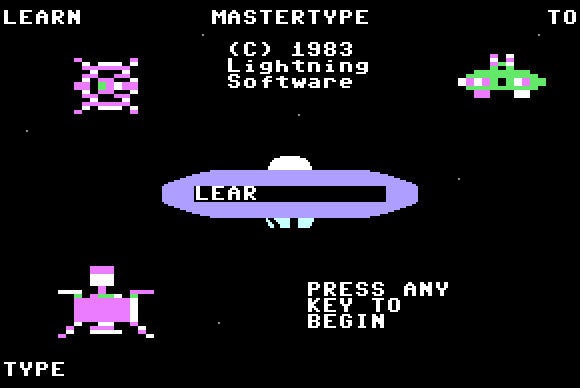
publisher: Lightning Software; platforms: Apple II, Commodore 64, MS-DOS
If you like typing—and who doesn’t?—as well as UFOs, you will love MasterType, which encourages players to learn QWERTY keyboarding skills by blasting away word aliens that approach your innocent spaceship. If space travel were really like this, Neil Armstrong would have been the best typist of all humankind. But then again, he may have never made it to the moon.
Thanks to a recently developed JavaScript Apple II emulator, you now can play the original Apple II version of MasterType online thanks to the Internet Archive.
Rocky’s Boots (1982)
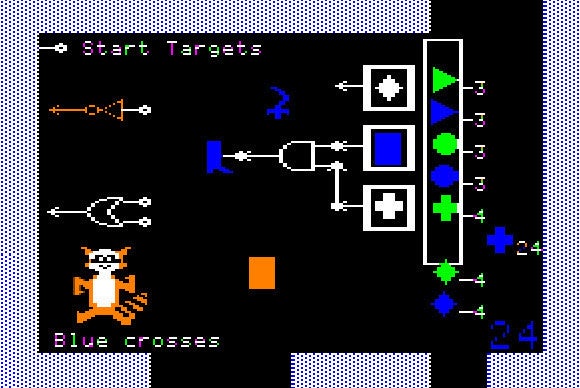
publisher: The Learning Company; platforms: Apple II, MS-DOS
In this 1982 educational classic named after a 1968 Beatles song, you play as a square—how’s that for character detail?—who encounters logical puzzles in various rooms that have been set up by a devious raccoon named Rocky. This poor square’s goal is to use logic gates to build circuits that will instruct a boot to kick a colored block. If it all sounds pointless, you’re not an electronic engineer. And yet this complex title was beloved by parents and educators of the time precisely for its ability to educationally torture your brain.
By the way, this game was developed by Warren Robinett, the creator of Adventure on the Atari 2600. In that game, the player also controls a square—while fighting a dragon that looks like a duck. I can’t decide if there is any latent symbolism to all of this, or if Robinett was just terrible as designing computer graphics.
The Oregon Trail (1982)
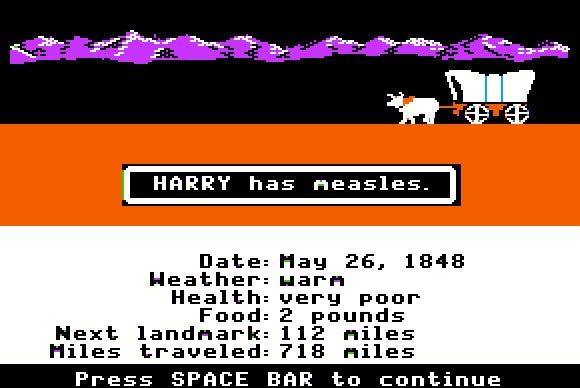
publisher: MECC; platforms: Apple II, MS-DOS, Macintosh
In the pantheon of American educational computer games, The Oregon Trail reigns supreme. So many kids played this game in school computer labs across the US that it has become a shared cultural meme, spawning ironic T-Shirts about dysentery and spoofs like zombie-themed The Organ Trail. In the real game, settlers hitch up a covered wagon with their family and try to make their way across the untamed Western territories while fending off rivers, bears, broken cart wheels, and various once-common, horrible diseases that we can now make fun of in industrialized nations thanks to vaccines.
Reader Rabbit (1984)
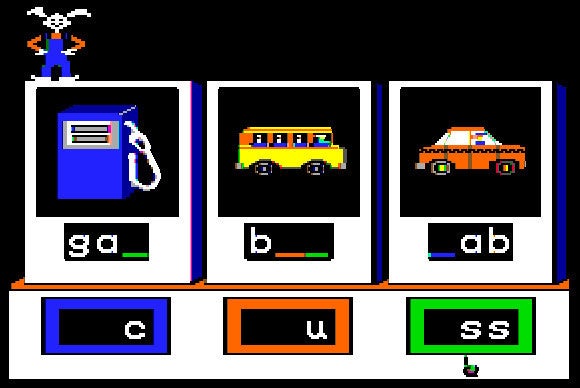
publisher: The Learning Company; platforms: Apple II, MS-DOS, Macintosh
Reader Rabbit teaches kids something, but I can’t figure out what it is—maybe something involving understanding letters and words, and maybe figuring out what they mean when strung together into a long sequence. Or maybe it’s just a car and bus simulator. Either way, it must have worked well, because it was an award-winning, critically acclaimed title that inspired many sequels over the following 25 years, including a recent game for the Nintendo Wii. You can now play the original 1984 game online thanks to the Internet Archive. When you’re done, let me know what it’s all about.
Where in the World is Carmen Sandiego? (1985)
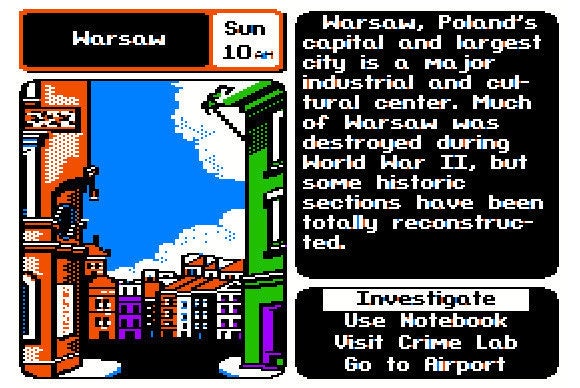
publisher: Brøderbund Software; platforms: Apple II, Commodore 64, MS-DOS
If you’re like me, you can’t read the title of this game without the theme song of the similarly titled 1990s TV show running through your head. That show existed due to the popularity of the Carmen Sandiego series, which taught kids culture and geography while chasing the super spy Carmen throughout various locales. In the first game (published in 1985), players would chase Carmen throughout world cities, and in the very successful sequels, she could be found hiding across the USA and even through time itself.
Number Munchers (1986)
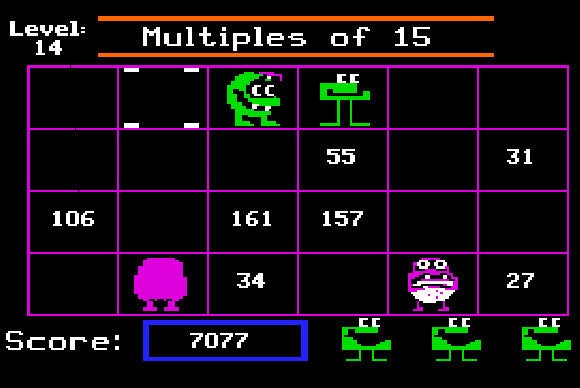
publisher: MECC; platforms: Apple II, MS-DOS, Macintosh
Most people remember The Oregon Trail as the most popular game in the computer lab, but at my school, kids literally fought over the chance to play Number Munchers (or any of its Munchers-related sequels) on the Apple II or IBM PC. They loved it so much that teachers used it as a reward for finishing a test early. In the game, you play as a green stilt-legged creature who must eat the correct numerical answers to the questions or problems shown on the top of the screen. But watch out for those monstrous baddies, who apparently hate math.
Odell Lake (1986)
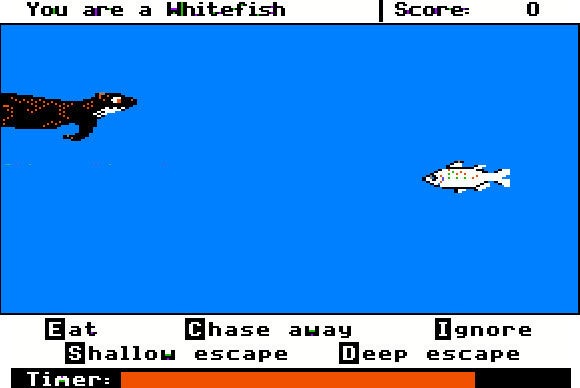
publisher: MECC; platforms: Apple II, Commodore 64
Imagine if you were a fish, and if every time you came upon another fish (I mean every time), you had to stop and decide: “Should I eat it, ignore it, chase it, or escape?” You’d be so paralyzed with choices that you wouldn’t get anything done. And yet that’s exactly what happens in Odell Lake (with a timer no less!), which plays like a neurotic fish’s nightmare, complete with a flesh-devouring otter. Odell Lake could be found in thousands of Apple II school computer labs throughout the US in the 1980s, and we happily played it—especially if it meant that we didn’t have to do any real work for those few minutes of the week.
(By the way, you can relive the fish nightmare today in a web browser thanks to the Internet Archive.)
Mixed Up Mother Goose (1986)
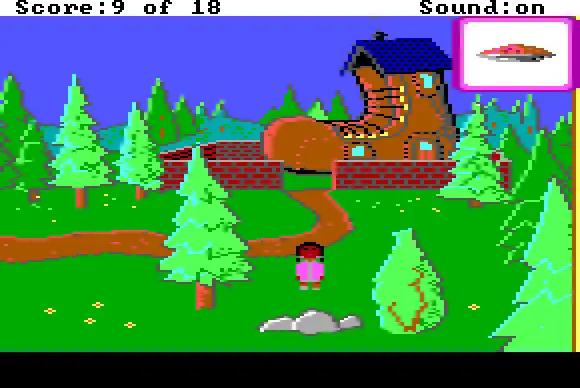
publisher: Sierra On-Line; platforms: MS-DOS, Amiga
In this Roberta Williams-developed classic, Mother Goose is all mixed up. I mean, she can’t find anything. Ms. Goose isn’t specific about how it happened, but apparently a huge wind has come through the fairytale kingdom and blown various key nursery rhyme-related objects (e.g., lost sheep, a fiddle, a candlestick) all over the place. Your job, as a kid just shipped in from dreamland, is to clean up the mess by returning the objects to their rightful owners. This title received several re-releases over time that incorporated graphical improvements. But in every release, everything still gets mixed up. Sigh. You can’t change a person, really.
Super Solvers: Treasure Mountain (1990)

publisher: The Learning Co.; platforms: MS-DOS, Macintosh, Windows
In Treasure Mountain, your goal is to climb—get this—a mountain while collecting as much treasure as possible. (I concede they picked a pretty good title for the game.) Along the way, you try to catch elves with your elf-net. Once caught, the feisty elves quiz you with a question, and if you get it right, they provide a clue that helps you find more treasure. Along the way, players learn mountaineering, unrestrained materialism, elf-kidnapping skills, and, of course, logical thinking. It’s a fun game.
Spelunx and the Caves of Mr. Seudo (1991)

publisher: Brøderbund Software; platforms: Macintosh
Before brothers Rand and Robyn Miller created the smash-hit adventure title Myst in 1993, they developed a series of playful, semi-educational adventure/exploration games for the Macintosh, including The Manhole (1988), Cosmic Osmo and the Worlds Beyond the Mackerel (1989), and this title, Spelunx, in 1991. All three titles utilized Apple’s novel HyperCard multimedia platform as their game engine, and all three immersed the player in gloriously illustrated, fantastical worlds where your brain was free to wander while tinkering with interactive toys sprinkled throughout the various screens.
Castle of Dr. Brain (1991)
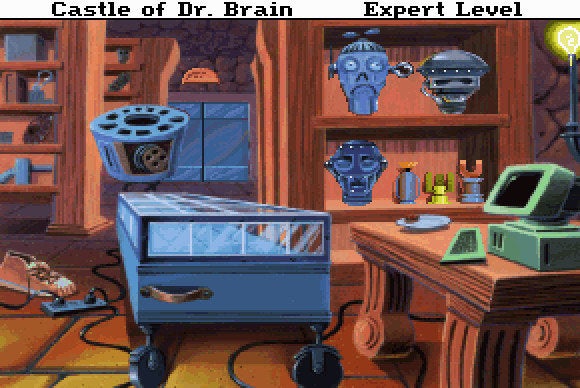
publisher: Sierra On-Line; platforms: MS-DOS, Macintosh, Amiga
Castle of Dr. Brain is a whimsical, point-and-click, screen-based educational puzzle game with a first-person perspective. Sort of like Shadowgate with more robots and fewer mirrors. In the game, you play as a prospective assistant to the eponymous Dr. Brain who seeks a path through the castle so you can win a contest. Spoiler Alert: You make through the castle, because Sierra released a similarly well-received sequel, The Island of Dr. Brain, in 1992. What happened to you after that is anybody’s guess.
Mario Teaches Typing (1992)
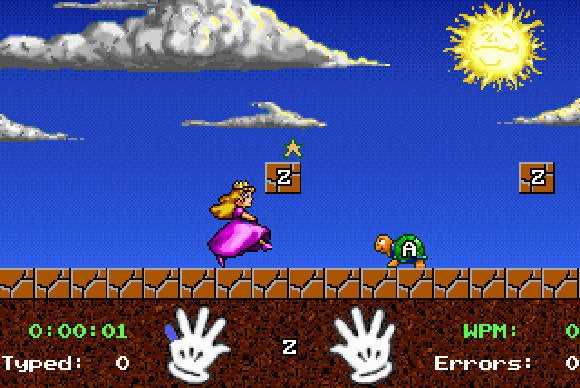
publisher: Interplay Entertainment; platforms: MS-DOS, Macintosh
If you need to practice typing skills and you love Nintendo’s Mario characters, you are looking at the perfect game. As part of a series of educational PC titles featuring Mario from the 1990s (see also: Mario is Missing and Mario’s Time Machine), Mario Teaches Typing revealed an unexpectedly liberal side of Nintendo’s IP licensing. But it made sense for a generation of kids who grew up guiding Mario on console adventures, and they loved to learn with the help of their favorite mustachioed plumber.
The Incredible Machine (1992)
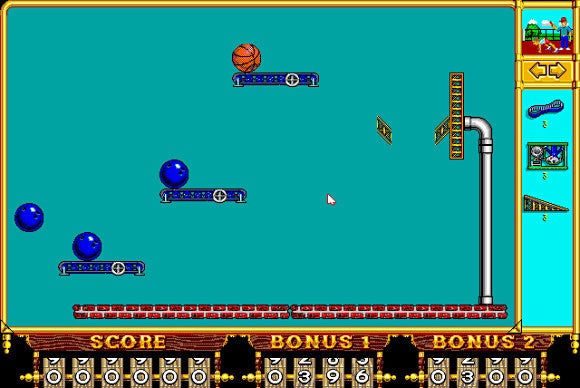
publisher: Sierra On-Line; platforms: MS-DOS, Macintosh
If Rube Goldberg had designed a computer game, it would have been The Incredible Machine, a classic logical puzzler that incorporates mechanical knowledge and physics into a playful virtual sandbox. In the game, each stage presents the player with a challenge, such as get a ball into a basket. Players must use the parts provided to assemble machine that gets the job done. This game taught kids how to make elaborate, impractical machines that would never work in real life. But it was still awesome.
Museum Madness (1994)
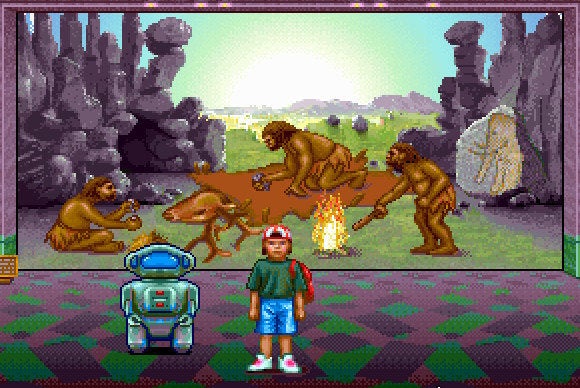
publisher: MECC; platforms: MS-DOS, Macintosh
It’s late at night and a computer virus (bear with me) has compelled the exhibits in your favorite local museum to come to life! You play as a boy who must, with the aid of a sentient robot (named MICK, for “Museum Interactive Computer Kiosk”), make things right after closing time by solving puzzles and learning history. Museum Madness is a well-illustrated, imaginative title that was well-received by kids in its day. I can see why.
Logical Journey of the Zamboonis (1996)
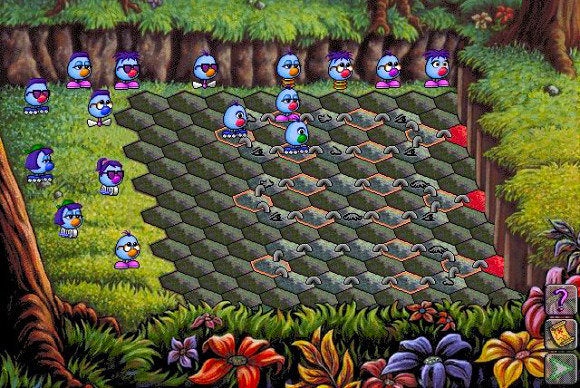
publisher: Brøderbund Software; platforms: Windows, Macintosh
Logical Journey of the Zamboonis is a critically acclaimed, graphically rich puzzle game that teaches logical thinking to kids. In the game, Zambooni Isle has been overrun by the Bloats, and your job is to guide the Zamboonis through various puzzles on the way to their new home (called Zoombiniton, in case you were wondering). Two sequels followed in 2001 and 2002, and fans successfully funded a Kickstarter campaign earlier this year—so more Zamboonis are on the way.
Pajama Sam: No Need to Hide When It’s Dark Outside (1996)
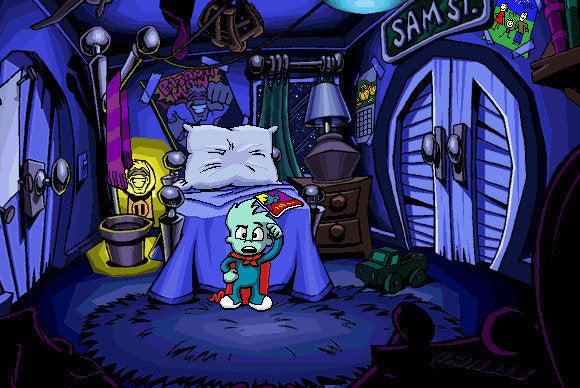
publisher: Humongous Entertainment; platforms: Windows, Macintosh
The character Pajama Sam debuted in this colorful adventure game developed by the makers of the Putt-Putt series and produced by Ron Gilbert of LucasArts fame. In this title, first released for Windows 3.1 in 1996, kids guided Pajama Sam through an adventure that taught them not to be afraid of the dark. The success of the game spawned a series of children’s books published between 1999 and 2001, and several sequels published until 2003. In 2008, Majesco Entertainment ported this classic to the Nintendo Wii.